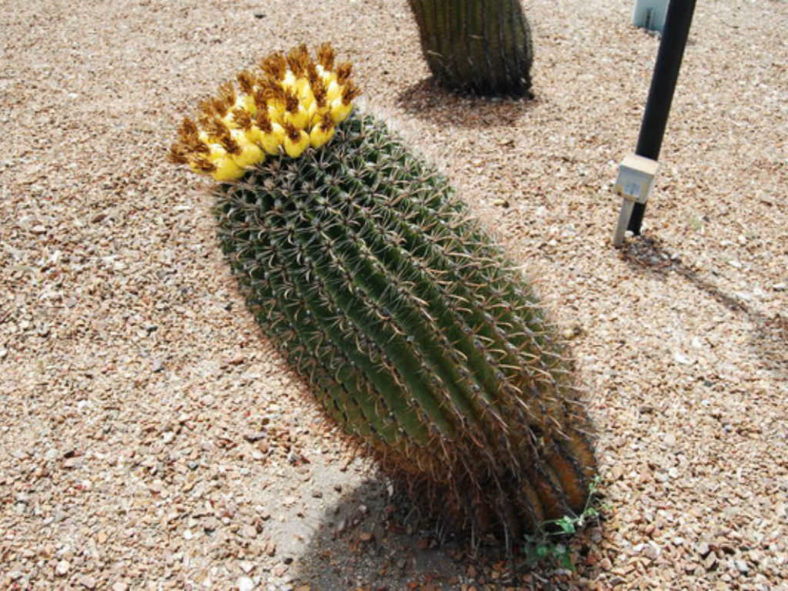Cacti are hardy plants that require minimal water and maintenance to survive, yet still need specialized care. Both indoor and outdoor cacti can suffer from leaning. A cactus that has been growing upright but is now leaning indicates that your plant is stressed somehow. Careful observations can help determine why the plant is leaning. If a problem is detected early, solutions are available that will save the cactus.
Inadequate Light
Even if your cactus is planted in full sun, it may lean because plants naturally grow toward the sunlight. If the cactus is otherwise healthy, this is not a danger. However, if a cactus planted in partial shade is leaning, it may need more sunlight. A cactus in this condition will appear sickly, with weak, flimsy stems that are yellow-green. Therefore, the plant should gradually be exposed to stronger sunlight to prevent sunburn.
Improper Planting
If the cactus is leaning from the ground, it may be loosely planted in the soil. Improper watering may be the reason. After watering a cactus, the soil must be allowed to dry out before watering again. Watering too frequently prevents the soil from hardening around the cactus base, causing the soil to loosen. Provided there is no root rot, transplanting the cactus into dry soil or packing more dirt around it is a solution. Additionally, adding a layer of small rocks or gravel to the surface can help stabilize the cactus.

Rot
Rot is caused by fungi and bacteria growing on the plant. The most common reason for rot is watering the cactus too often. The infected spot will have a watery, slimy, black appearance. The rot begins at the base of the cactus and works its way to the top. Rotting plants start to lean, then collapse and die. If rot is detected early, dig up the cactus and replant it in dry soil. Otherwise, remove the cactus from the soil and cut the healthy top away from the diseased part. Allow the top to dry, and dust the cut surface with a fungicide before replanting it in sandy soil.
Insects
Insects eating the cactus stem can weaken the plant and cause it to lean. A cactus infested with mealybugs will stop growing and become sickly and deformed. Mealybugs should be removed with tweezers or a cotton swab dipped in alcohol. Ants nesting at the base of the cactus eat away at the stem, causing it to lean and eventually fall over. Wash out the ants with a strong, lukewarm stream of water. A cactus weakened by insects may develop fungi, rot, and die if not treated.
Source: hunker.com
Links
- Succupedia: Browse succulents by Scientific Name, Common Name, Genus, Family, USDA Hardiness Zone, Origin, or cacti by Genus